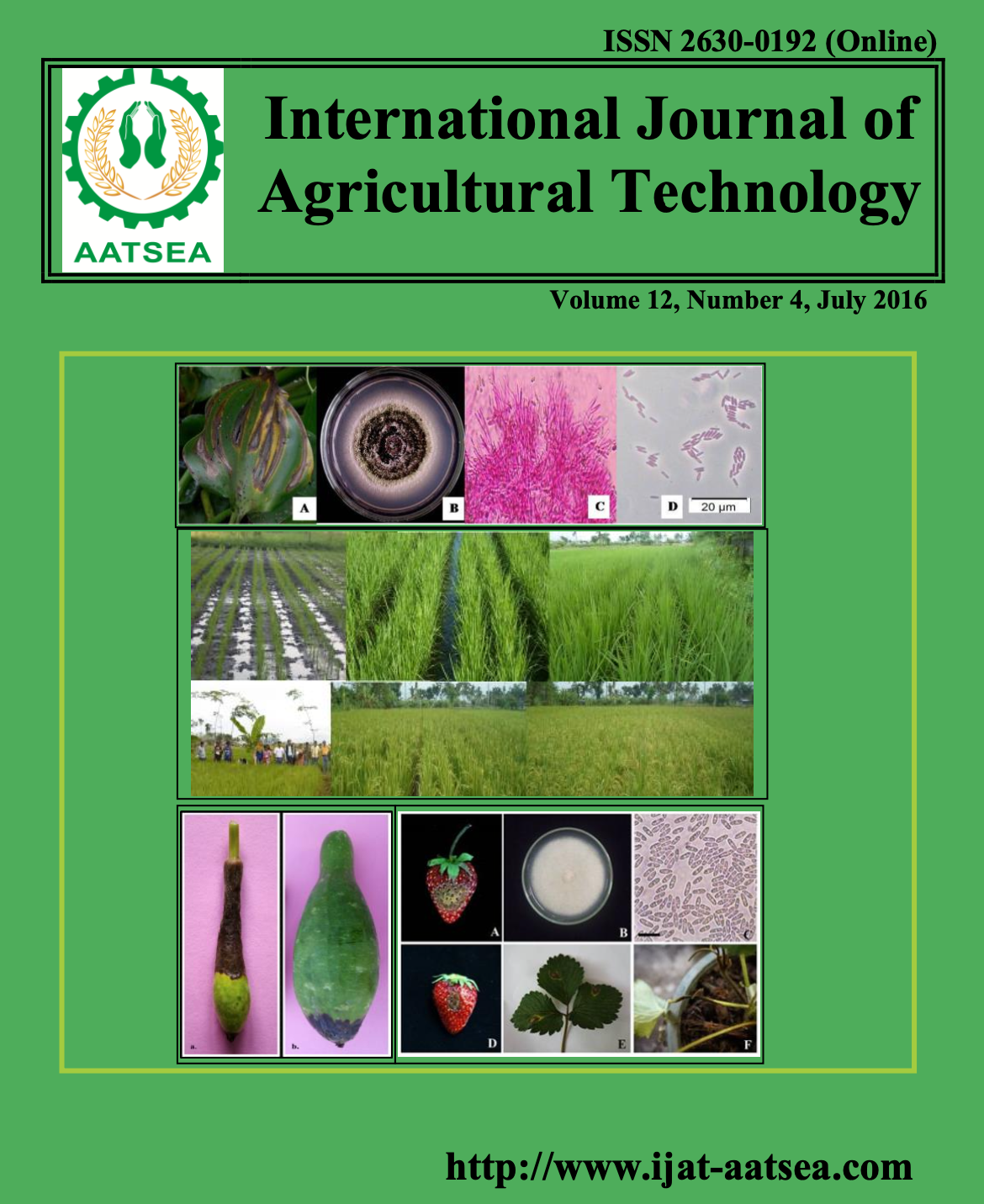Rearing honey bee queens in, Apis mellifera L. colonies during the activity season of oriental wasps Vespa orientalis L.
Main Article Content
Abstract
The following parameters were measured for the virgin queens during their rearing and production process in the Vespa wasps season; August, September and October months; mean queen weight and mean no. of queen ovarioles. The following races and hybrids were conducted for this study; Egyptian race, Carniolian race, Carniolian hybrid and Italian hybrid. The results indicated that, in august with low activity of Vespa wasps Carniolian hybrid was recorded the highest values of all parameters and followed by Italian hybrid, Carniolian race and Egyptian race, respectively. Whereas in September month with gradually increased the activity of wasps all parameters were decreased in all races and hybrid. On the other hand with high activity of wasps in October month, the parameters were sharply decreased in Carniolian hybrid and Italian hybrid followed by Carniolian and Egyptian races, respectively.
Article Details

This work is licensed under a Creative Commons Attribution-NonCommercial-NoDerivatives 4.0 International License.
References
Abd-Al-Fattah, M. A. and Ibrahim, Y. Y. (2009). The serious effects of the dangerous insect predator Vespa orientalis L., on hohnol. In neybee colonies in Giza governorate. 4th conf. on recent Technology in Agriculture 58-65.
Abd-Al-Fattah, M. A., Haggag, E. I. and Mohammad, N. A. (2007). Some factors affecting the quality of artificeially reared (Apis mellifera L.) queens within honeybee nursing colonies. Mansoura University Journal of Agricultural Sciences 32:3151-3159.
Ahmed, D. A. (2014). New applications for protecting honeybee, Apis mellifera L., colonies from attacking of oriental hornets Vespa orientalis L., M.Sc. Thesis, Faculty of Agriculture- Cairo University. 97 pp.
Al-Ghazawi, A. and Zaitoun, S. (2008). Origin and rearing season of honeybee queens affect some of their physiological and reproductive characteristics. Entomology Research 38:139-148.
Brar, H. S., Gatoria, G. A., Ihaji, H. S. and Chahal, S. (1985). Seasonal infestation of Galleria Mellonella and population Vespa orientalis in Apis mellifera piaries in Punjap. Indian Journal of Ecology 12:109-112.
Costa, C., Buechler, R., Berg, S., Bienkowska, M., Bouga, M. and Bubalo, D. (2012). A Europe-Wide experiment for assessing the impact of genotype-environment interactions on the vitality and performance of honeybee colonies: experimental design and trait. Journal of Apicultural Science 56:147-158.
El-Enany, Y. E. (2010). Studies on some factors affecting the fertility of honeybee Apis mellifera L., Queens. (Ph.D. Thesis). Faculty of Agriculture- Cairo University., Egypt. 144 pp.
Ibrahim, Y. Y. (2009). Evaluation of defence behaviour of honeybee Apis mellifera L., colonies against the attacking of oriental hornet Vespa orientalis L., Ph.D. Thesis, Faculty of Agriculture- Cairo University. 271 pp.
Laidlaw, H. H. (1975). Queen rearing. American Bee Journal 115:384-387.
Li, J. (2000). Technology for royal jelly production. American Bee Journal 6:469-473.
Marzouk, W. M. (2013). Impact of certain apiculture treatments on the defensive efficiency of honeybee colonies against oriental hornet. (Ph.D. Thesis). Faculty of Agriculture- Cairo University. 199 pp.
Moretto, G., Guerra, J. C. V., Kalvelage, H. and Espindola, E. (2004). Maternal influence on the acceptance of virgin queens introduced into Africanized honeybee (Apis mellifera) colonies. Genetics and Molecular Research 3:441-445.
Mustafa, M. A., Saleh, S. S. and Mohamed, A. D. (2002). Some morphological characters of queen honeybee Apis mellifera carnica according to different localities and seasonal variations. Mansoura University Journal of Agricultural Sciences 27:2587-2599.
Snedecor, G. W. and Cochran, W. B. (1980). Statistical methods. 7th ed Lowa State Univ., Ames. Lowa state, USA.
Taha, E. A. A. (2005). Studies on honeybee Apis mellifera L., Ph.D. Thesis, Faculty of Agriculture, Tanta University, Egypt. 159 pp.
Zohairy, A. M. E. (2001). Studies on queen rearing using cell punch and new other methods on Apis mellifera L. M.Sc. Thesis, Faculty of Agriculture., Mansoura University. 137 pp.


